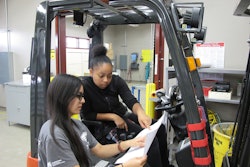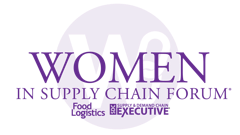Many companies think sending an employee to a public training course or mandating e-learning will cause the individual to learn new skills, broaden their horizons and apply those new skills to the job. While they meet corporate objectives, without the appropriate follow up, it is likely that people will attend classes and get limited value. I have seen companies spend significant money on e-learning licenses and send people to training events to have them return to the job, put the books on the shelf, get certificates of completion and go back to business as usual, making the training a necessary evil to comply with company objectives.
Considering the current skill gaps and the need to drive teams to a new level of excellence as our product life cycles shorten, speed to market increases, supply chain agility expands, and economic cycles rapidly change, just-in-time training programs are imperative with linkages to the business need. The need for quick training requires new techniques, measurement, and personal coaching and mentoring to achieve optimum results.
What is lacking is the ability to effectively embed the learning by linking the new tools and techniques with the sourcing process and providing coaching and mentoring. These are essential elements that assure knowledge is integrated and used. In an environment where there is constant change, disruptive innovation, and regular mergers and acquisitions, education and development are ongoing and continuous.
Many companies think sending an employee to a public training course or mandating e-learning will cause the individual to learn new skills, broaden their horizons and apply those new skills to the job. While they meet corporate objectives, without the appropriate follow up, it is likely that people will attend classes and get limited value. I have seen companies spend significant money on e-learning licenses and send people to training events to have them return to the job, put the books on the shelf, get certificates of completion and go back to business as usual, making the training a necessary evil to comply with company objectives.
Considering the current skill gaps and the need to drive teams to a new level of excellence as our product life cycles shorten, speed to market increases, supply chain agility expands, and economic cycles rapidly change, just-in-time training programs are imperative with linkages to the business need. The need for quick training requires new techniques, measurement, and personal coaching and mentoring to achieve optimum results.
Missing Link
What is lacking is the ability to effectively embed the learning by linking the new tools and techniques with the sourcing process and providing coaching and mentoring. These are essential elements that assure knowledge is integrated and used. In an environment where there is constant change, disruptive innovation, and regular mergers and acquisitions, education and development are ongoing and continuous.
In one company, the management team said, “We are providing this training for your reference and knowledge, using the tools and processes are optional.” When asked to provide feedback, I told them for the training, methodology and development to be effective they needed to be directly linked to the sourcing process to have the maximum impact on the company. When the expectation is optional tools, with no formal process and no linkage to the sourcing strategy, the outcome is likely failure of the objective, as well as wasted money and wasted time.
Embeded learning at a diversified manufacturing company with businesses in aerospace, ATVs, boats and defense provides a good example. The company introduced prerequisites and required that on the last day of the workshop each delegate identify and commit to a project to add value to the company using the methods, processes and tools from the course. The students had six months to complete the project. They had access to the instructor and alignment with their manager on the project focus. Upon the completion of the project as validated by their manager, the student received credit for the course and recognition for the contribution to the company. The sponsors were pleased with the program as they were able to return $40 for every $1 invested in the program.
The key to embedding the learning is to have a follow-up process to integrate the knowledge.
Maximize Your Coaching
Coaching is one way to maximize the effectiveness of your training and development program. The manager or supervisor should oversee the coaching program as it codifies the way things will operate during the project. The coaching will be more effective if the training company standardizes processes and creates templates to facilitate the use of the toolkit. One example of this is to align the training to the category management and sourcing processes. These templates can help the supervisor with the coaching process.
Five keys to successful coaching after a training are as follows:
- Decide which tools and objectives will be accomplished. The manager must have a clear idea of which concepts from the training are applicable. The manager must participate in the preparation or the development of the training program.
- Set a goal with the employees that will target critical concepts from the training category plan or supplier plan.
- Have the employee make a roadmap for reaching the project goal.
- Give feedback as the employees work through the program and ensure all check-in and gate meetings occur. Encourage the employee, clarify any misunderstandings and understand what motivates the employee.
- Upon completion of the project, debrief what went well; what could have gone better; the processes, tools and techniques used; the learning; and the next opportunity.
There is little doubt that coaching and mentoring after a training event takes time, energy and effort, but the long-term benefits to the employee and company are significant. The satisfaction in working with an individual or team of people is substantial as new skills are learned, and the team increases its competence and capability while earning the stakeholder and company’s respect.
The real key to success is management participation in the overall program, which can be accomplished through design, review of content or involvement in the training.
The choices are clear. Send people to class or assign e-learning modules and leave people unsupervised to use the concepts of the program. Alternatively, engage management in the development of the program, or participation in the program with the objective to coach their team to success. The major complaint of both employees and managers is that there is not enough time to complete daily work. The training and development are considered a burden. If done well, the development process will create lifelong opportunities to improve effectiveness, drive change for the company and provide a platform to excel.
It is time to rethink training. If you are investing in employees, you should expect a return on that investment.
Are you coaching to embed
the learning in your development process?





















